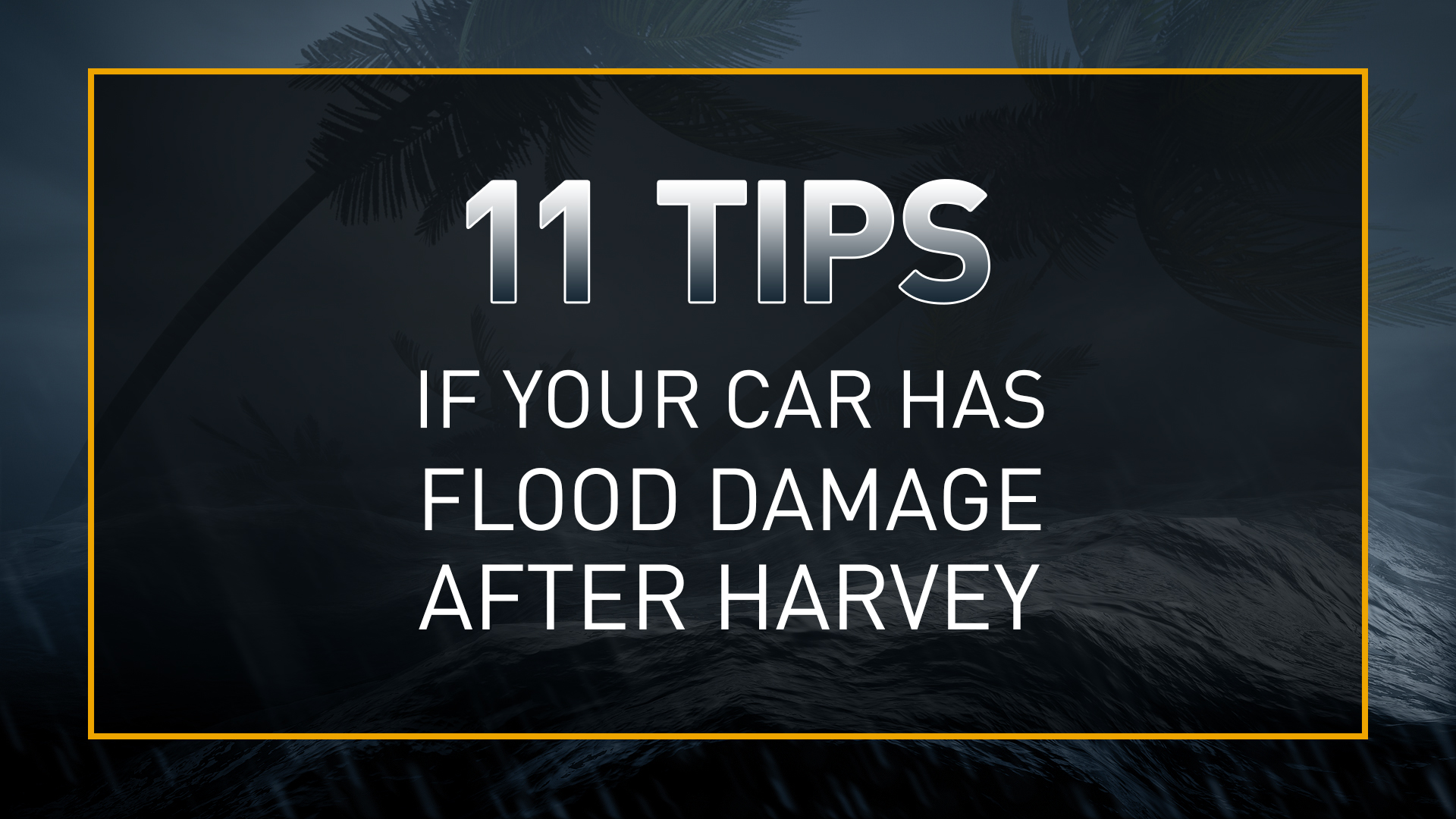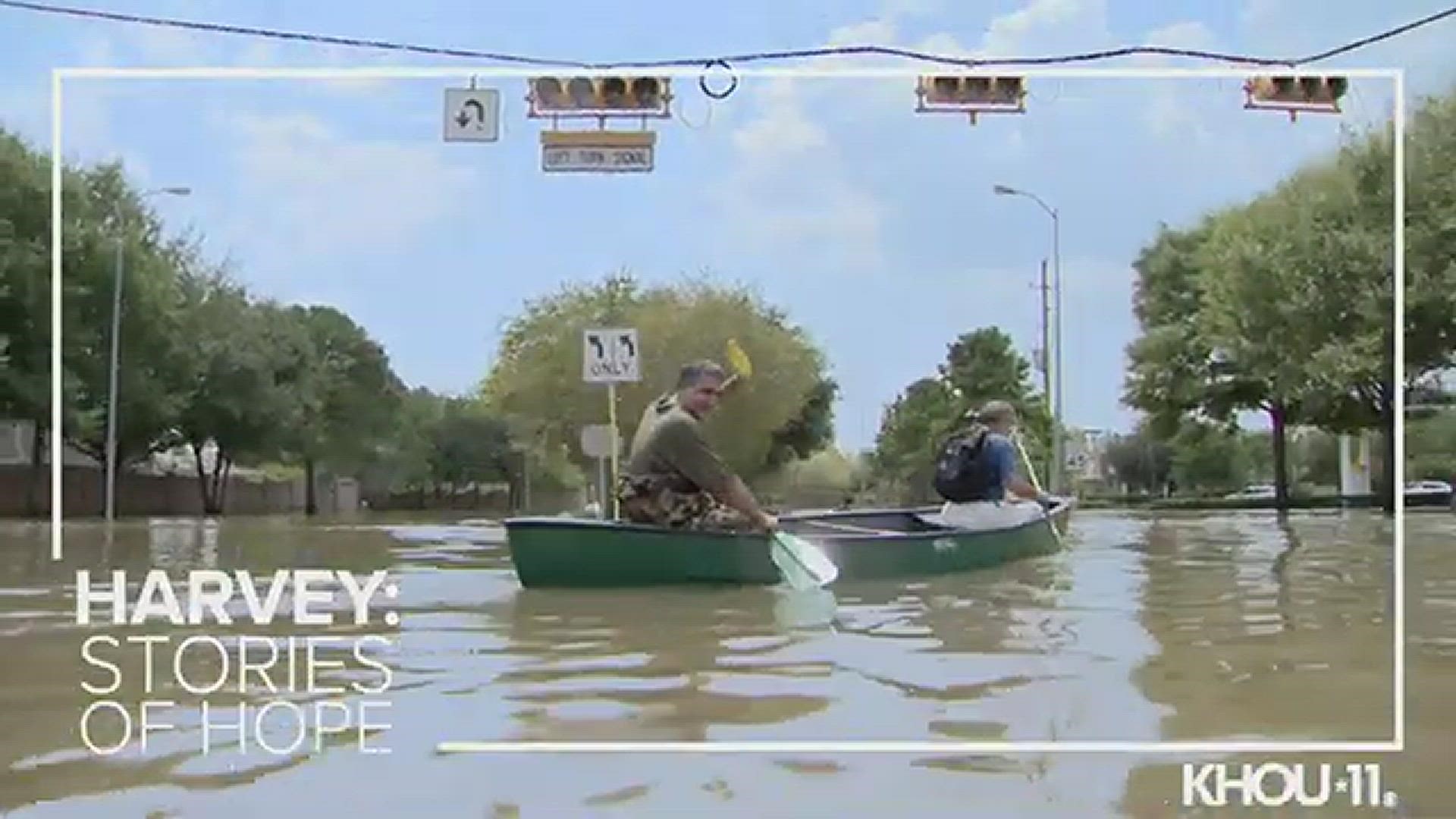Dealing with vehicle flood damage can be a timely and costly process. Here are a 11 things you should know before you start dealing with a flood-damaged car.
1. What are some of the first things I should do if I have a flood-damaged vehicle?
Before you do anything, it’s important to determine how much damage was done.
• You should not try to start your car, according to State Farm Automobile Insurance. Starting your car will cause more harm if water is in the engine.
• Be sure to start drying out your car as soon as possible. Call a tow truck to help get your car back onto higher ground. Note: The transmission fluid, lube and oil may need draining before the car is towed, State Farm Automobile Insurance states.
• Get your car to a mechanic. The mechanic will be able to determine just how bad the flood damage is. Additionally, you’ll be able to find out more about electrical components.
• Clean the inside of your car. Make sure you get rid of all the moisture and absorb all water. If you can, State Farm Automobile Insurance suggests that you remove seats and seat cushions. Be sure to get professional advice to ensure that you don’t end up with mold, electrical issues and other problems.
• After all of this has been done you can find out more about repair costs.
2. Is a flood-damaged car worth repairing?
It all depends on how much you are willing to spend on the car. Rule of thumb: if the water went past the floorboards and into the areas where the electronics are located, you may want to let the car go. Take the car to a specialist or a mechanic to determine whether or not it’s worth putting money towards fixing it.
3. How do I minimize the effects of water damage to my car?
Note: Make sure the battery is disconnected before you start working on your car.
• Remove all standing water from your car. Try using a bucket or cup at first to get as much water out as possible. • Try using a wet or dry vacuum to remove the water from inside of your car.
• Be sure to hang up any loose items, such as car mats etc.
• As mentioned before, try removing the seats and console. These items will need to be removed in order to try and keep the floors from rusting.
• Lift the carpet out of your car and hang it up to dry. Do your best to remove the carpet all at once, as opposed to pulling it up in pieces.
• Be sure to wash out the carpeting and mats. You can use a garden hose or pressure washer.
• Set up fans in your car to help speed up the drying process.
• Once you’ve put everything back into your car, make sure you deodorize your car. This will help cut back on the bad smells. Try using baking soda, an air sponge and paper towels.
4. Will my insurance cover the costs?
The Texas Department of Insurance says you are covered for flood damage to your vehicle if you have comprehensive auto coverage. If you don’t have your policy, be sure to call your insurer.
5. Does a flood-damaged vehicle equate to my car being totaled?
The final decision will be made by your insurance company. According to the Texas Department of Insurance, the insurance company will look at your car’s actual cash value verses the cost of repairs. Your insurer will consider the car totaled if fixing it costs more than what it’s actually worth.
6. How do I file an insurance claim?
Get in touch with your insurance company as soon as you can. Just like any other claim, you’ll need to take pictures of the damage. Your company will then send an adjuster to evaluate the damages.
Note: Companies have to pay claims in a timely matter, according to Texas laws. The Texas Department of Insurance says deadlines can be extended for disasters.
7. What should I do if my car floated away?
Reach out to the police department’s unclaimed autos department to find out if your vehicle has been located.
8. What do I do if I think my car is worth more than what my insurance company is willing to pay?
There are a couple of steps you should take if you think your car is worth more than what the insurer is telling you.
• The Texas Department of Insurance suggests getting quotes from used car dealers.
• Try looking at prices online for your car or similar cars.
• Be sure to take note of any special features or custom your car may have.
• It never hurts to try and negotiate with the insurance company.
9. What happens if I owe more than the settlement?
It all depends on whether or not you have a gap policy. If you have a gap policy, it should cover the difference between what you owe and the settlement amount, according to the Texas Department of Insurance. If you don’t have a gap policy then you will have to take care of the remainder of the loan.
10. How do I avoid buying a flood-damaged car?
Flood-damaged cars can often show up in used parking lots. Here are a few things you should look out for when purchasing a used car:
• Only buy from a reputable car dealer.
• Ask the dealer if the car has flood damage and be sure to get it in writing. If a car has suffered flood damage, the dealer is required to disclose this information.
• If you believe the car has flood damage, ask to see the title. Also ask for the car’s history.
• Have a professional inspect the car.
• Get a Carfax.
Note: Find out what kind of flood damage you are dealing with and how extensive the damage is. Flood damage doesn’t always mean you shouldn’t buy the car. The car may still be in good condition and worth purchasing.
11. Where can I get a copy of my title?
Get in touch with the Texas Department of Motor Vehicles if you need a copy of your title.
Sources:


